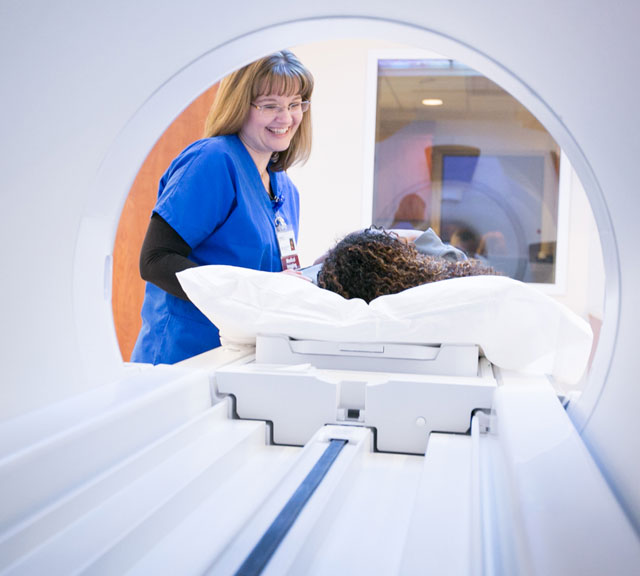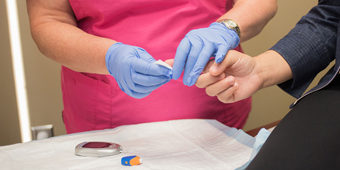Arteriovenous Malformation: Stroke of Bad Luck?

Answer a few questions and we'll provide you with a list of primary care providers that best fit your needs.
Most of us don’t give a thought to the smooth flow of blood that travels through our brains from arteries to capillaries to veins. Yet, for one in 200 to 500 people (less than 1 percent of the population), a tangled web of blood vessels occurs in the brain or spine with the potential risk of bleeding. This complex condition has a complex name: arteriovenous malformation — or AVM for short. Doctors believe most AVMs are present at birth, but no one knows precisely because many AVMs never cause a problem and remain undiscovered.
AVMs can occur inside the brain or on its surface. The tangled blood vessels frequently bypass healthy brain tissue, delivering oxygenated blood directly from arteries to veins. If you have an AVM, you have less than a 4 percent chance of experiencing bleeding — a type of hemorrhagic stroke — but that bleeding can be severe and uncontrolled without prompt medical attention. If left untreated, it can cause death or damage regions of the brain that control your senses, language, critical thinking and movement.
“This is a treatable condition, and it’s important to work with skilled medical providers to find the most appropriate treatment for you,” says Esteban Cheng-Ching, MD, vascular neurologist with the Clinical Neuroscience Institute in Dayton, Ohio. He notes that a team of diverse neuroscience experts may be best equipped to offer the latest in both planned and emergency treatments for AVMs.
“Hemorrhagic stroke from an AVM can happen in young adults," he continues. Symptoms from a brain AVM can vary and include:
- Seizures
- Severe headache (especially with sudden onset)
- Numbness
- Tingling
- Trouble with speech or language
Symptoms of an AVM spinal stroke are sudden, severe back pain, weakness in arms or legs or paralysis. Once bleeding occurs in the brain or spine, you’re nine times more likely to bleed again during the first year, Dr. Ching says.
He emphasizes that immediate medical attention offers the best chance of successfully treating an AVM and preventing permanent damage to the brain.
AVM Diagnosis and Treatment
For some people, an AVM is identified incidentally by a CT scan or MRI while doctors are working to diagnose another condition or problem in the brain. This gives medical providers more time to evaluate the AVM and decide on a treatment course. However, many people don’t realize they have an AVM until symptoms occur.
A catheter cerebral angiogram is the most effective way to assess an AVM for treatment. Your doctor threads a catheter through an artery in your groin to your head and neck and injects dye inside the blood vessels, pinpointing the AVM so doctors can evaluate the risk of bleeding and develop treatment options.
This is a treatable condition, and it’s important to work with skilled medical providers to find the most appropriate treatment for you.
Large medical centers often have a multidisciplinary team working together to treat AVMs, Dr. Ching notes. Specialists include neurologists, neurosurgeons, radiation oncology/radiosurgery specialists and neurointerventional specialists. Together, they recommend treatment customized for each person’s unique situation.

Treatment options to stop or prevent bleeding from an AVM include:
- Observation and medical management, if the AVM is not bleeding and has not caused symptoms
- Radiosurgery, which focuses beams of radiation at the abnormal vessels to close off blood flow
- Embolization, in which a small catheter delivers a glue-like material to the AVM to stop the blood supply
- Surgery, including removing a piece of the skull to reach the AVM and surgically removing it
Answer a few questions and we'll provide you with a list of primary care providers that best fit your needs.
Source: Esteban Cheng-Ching, MD, Clinical Neuroscience Institute; American Stroke Association





